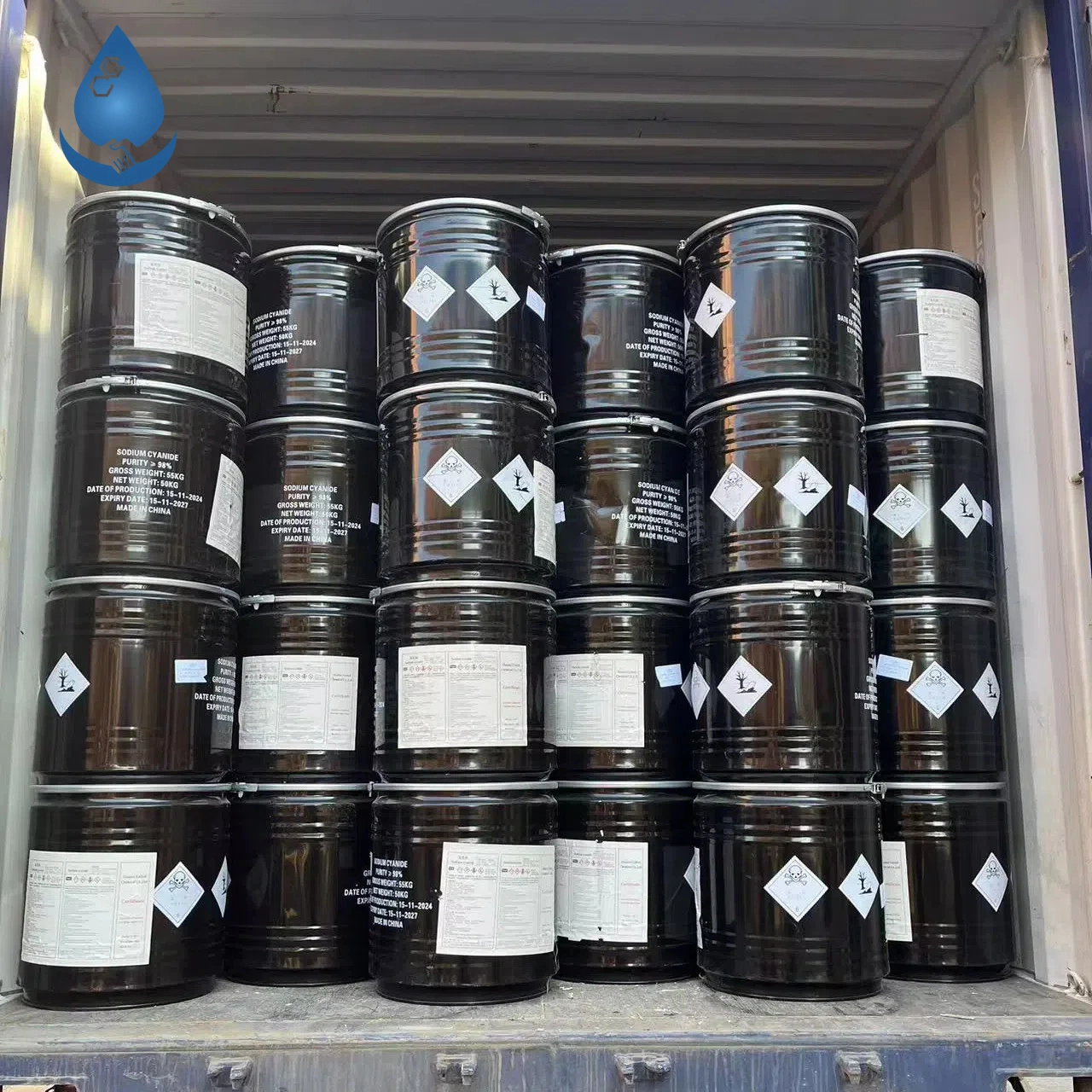| ACUTE HAZARDS | PREVENTION | FIRE FIGHTING | |
|---|---|---|---|
| FIRE & EXPLOSION | Not combustible but forms flammable gas on contact with water or damp air. Gives off irritating or toxic fumes (or gases) in a fire. | NO hydrous agents. NO water. NO carbon dioxide. In case of fire in the surroundings, use appropriate extinguishing media. In case of fire: keep drums, etc., cool by spraying with water. |
| AVOID ALL CONTACT! FIRST AID: USE PERSONAL PROTECTION. | |||
|---|---|---|---|
| SYMPTOMS | PREVENTION | FIRST AID | |
| Inhalation | Nausea. Dizziness. Drowsiness. Sore throat. Headache. Confusion. Weakness. Shortness of breath. Convulsions. Unconsciousness. | Use local exhaust or breathing protection. | Administration of oxygen may be needed. Fresh air, rest. No mouth-to-mouth artificial respiration. Refer immediately for medical attention. |
| Skin | MAY BE ABSORBED! Redness. Pain. Further see Inhalation. | Protective gloves. Protective clothing. | Wear protective gloves when administering first aid. Remove contaminated clothes. Rinse skin with plenty of water or shower. Refer immediately for medical attention . See Notes. |
| Eyes | Redness. Pain. Further see Inhalation. | Wear face shield or eye protection in combination with breathing protection. | First rinse with plenty of water for several minutes (remove contact lenses if easily possible), then refer for medical attention. |
| Ingestion | Burning sensation. Nausea. Vomiting. Diarrhoea. See Inhalation. | Do not eat, drink, or smoke during work. Wash hands before eating. | Rinse mouth. Administration of oxygen may be needed. NO mouth-to-mouth artificial respiration. Do NOT induce vomiting. Refer immediately for medical attention. See Notes. |
| SPILLAGE DISPOSAL | CLASSIFICATION & LABELLING |
|---|---|
| Evacuate danger area! Consult an expert! Personal protection: chemical protection suit including self-contained breathing apparatus. Do NOT let this chemical enter the environment. Ventilation. Sweep spilled substance into covered dry, sealable, labelled containers. Cautiously neutralize remainder with sodium hypochlorite solution. | According to UN GHS Criteria DANGER Fatal if swallowed, in contact with skin or if inhaledCauses skin and eye irritation Very toxic to aquatic life with long lasting effects Transportation |
| STORAGE | |
| Separated from strong oxidants, acids, food and feedstuffs, carbon dioxide and products containing water. Dry. Well closed. Keep in a well-ventilated room. Store in an area without drain or sewer access. | |
| PACKAGING | |
| Airtight. Unbreakable packaging. Put breakable packaging into closed unbreakable container. Do not transport with food and feedstuffs. Marine pollutant. |
| SODIUM CYANIDE | ICSC: 1118 |
| PHYSICAL & CHEMICAL INFORMATION | |
|---|---|
Physical State; Appearance Physical dangers Chemical dangers | Formula: NaCN |
| EXPOSURE & HEALTH EFFECTS | |
|---|---|
Routes of exposure Effects of short-term exposure | Inhalation risk Effects of long-term or repeated exposure |
| OCCUPATIONAL EXPOSURE LIMITS |
|---|
| TLV: (ceiling value): 5 mg/m3 as STEL; (skin). EU-OEL: 1 mg/m3 as TWA; 5 mg/m3 as STEL; (skin) |
| ENVIRONMENT |
|---|
| The substance is very toxic to aquatic organisms. |
| NOTES |
|---|
| The occupational exposure limit value should not be exceeded during any part of the working exposure. Specific treatment is necessary in case of poisoning with this substance; the appropriate means with instructions must be available. Isolate contaminated clothing by sealing in a bag or other container. Do NOT take working clothes home. Depending on the degree of exposure, periodic medical examination is suggested. Never work alone in an area if hydrocyanic acid exposure is possible. |
| ADDITIONAL INFORMATION |
|---|
| Pas de VLEP française. CLP00 : "sels de cyanures d'hydrogène à l'exception de ceux nommément désignés dans l'annexe" (n°Index : 006-007-00-5) : H300; H310; H330; H400; H410; EUH032. EC Classification |
| All rights reserved. The published material is being distributed without warranty of any kind, either expressed or implied. Neither ILO nor WHO nor the European Commission shall be responsible for the interpretation and use of the information contained in this material. |
Sodium Cyanide (NaCN) - A Key Component for the Mining Industry
Sodium Cyanide is a critical reagent in the mining industry, especially for gold and silver extraction. As a highly effective leaching agent, it aids in efficiently extracting precious metals from ore, ensuring high yield and profitability.

Key Features:
Appearance: White hygroscopic crystalline powder, with a characteristic odor when wet.
Chemical Formula: NaCN
Solubility: 480-520 g/l at 20°C (freely soluble in water)
Physical Properties: Melting Point: 564°C | Boiling Point: 1496°C | Density: 1.6 g/cm³
Applications:
Sodium Cyanide plays a vital role in gold mining, mineral processing, and other industrial applications. Its high solubility and effectiveness make it a top choice in leaching processes, contributing to cost-effective and sustainable mining operations.
Safety and Handling
Precautionary Measures:
Sodium Cyanide is a hazardous substance and requires strict safety protocols during handling and storage. Avoid all contact with skin, eyes, or inhalation of vapors. Proper protective gear including gloves, face shields, and respiratory protection should always be used.
Inhalation: Nausea, dizziness, and dizziness. In extreme cases, unconsciousness and convulsions.
Skin Contact: Can cause redness and irritation. May be absorbed through the skin.
Eye Contact: Redness and pain.
Ingestion: Can cause nausea, vomiting, and diarrhea. Avoid ingestion by following proper handling guidelines.
First Aid:
Inhalation: Fresh air and rest. Immediate medical attention is required. Do not attempt mouth-to-mouth resuscitation.
Skin: Remove contaminated clothing and wash thoroughly with water. Seek immediate medical attention.
Eye Contact: Rinse eyes with plenty of water for several minutes. Consult medical professionals immediately.
Ingestion: Rinse mouth, do not induce vomiting. Seek medical attention immediately.
Environmental Impact:
Sodium Cyanide is highly toxic to aquatic life and requires careful disposal to prevent environmental damage. Always follow disposal guidelines and ensure that no chemical waste enters water systems.
Storage and Packaging:
Store Sodium Cyanide in a cool, dry, and well-ventilated area, away from strong oxidizers, acids, and moisture. Packaging should be airtight and unbreakable to avoid leakage.
UN Classification:
UN Hazard Class: 6.1 | UN Pack Group: I | Marine Pollutant
Why Choose United Chemical?
United Chemical provides high-quality Sodium Cyanide with reliable and consistent performance. Our product complies with international safety standards, ensuring that your operations run smoothly and safely. With our extensive technical expertise and commitment to customer service, we are the trusted partner for mining companies worldwide.
- Random Content
- Hot content
- Hot review content
- Collector BLK-301/Composite Flotating Active Matter ≥60%
- Sodium Sulfide Industry Grade 60% 30ppm/150ppm Yellow/ Red Flakes Na2s
- Calcium Peroxide 60% Assay Yellowish Tablet
- Sodium Persulfate,Sodium Persulphate,supplier 99.00%
- Dodecylbenzenesulfonic acid
- Triethanolamine(TEA)
- Sodium sulphate 99% Pharmacy Grade
- 1Discounted Sodium Cyanide (CAS: 143-33-9) for Mining - High Quality & Competitive Pricing
- 2China's New Regulations on Sodium Cyanide Exports and Guidance for International Buyers
- 3Sodium Cyanide 98% CAS 143-33-9 gold dressing agent Essential for Mining and Chemical Industries
- 4International Cyanide(Sodium cyanide) Management Code - Gold Mine Acceptance Standards
- 5China factory Sulfuric Acid 98%
- 6Anhydrous Oxalic acid 99.6% Industrial Grade
- 7Oxalic acid for mining 99.6%
- 1High Quality 99% Purity of Cyanuric chloride ISO 9001:2005 REACH Verified Producer
- 2Sodium Cyanide 98% CAS 143-33-9 gold dressing agent Essential for Mining and Chemical Industries
- 3 High-Quality Sodium Cyanide for Leaching
- 4Powdery emulsion explosive
- 5Industry Grade Electron grade 98% Sulfuric Acid H2SO4 Sulphuric Acid Battery Acid Industrial Sulfuric Acid
- 6Colloidal emulsion explosive
- 7sodium hydrosulfide 70% flakes used Mining Industry










Online message consultation
Add comment: